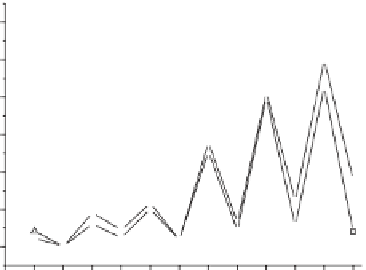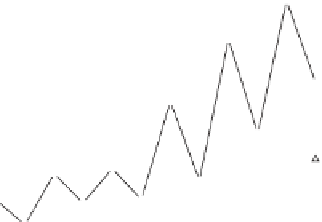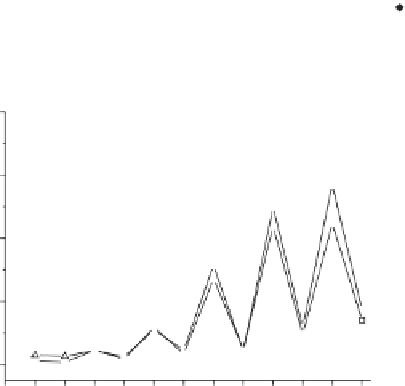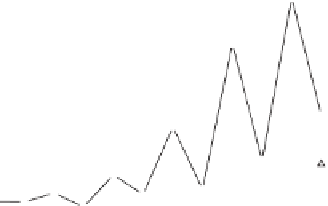Biomedical Engineering Reference
In-Depth Information
6
5
4
3
2
0 s
1 s
5 s
1
0
0123456789 0 1 2
Number of layers
(a)
4
3
2
1
0 s
1 s
5 s
0
0
1
2
3
4
5
6
7
8
9
10
11
12
Number of layers
(b)
Figure 5.18
Normalised pull-off force as a function of layer number and contact time at
maximum load for PEM covered silica surfaces. (a) Lowmolecular weight PAH and PAA
and (b) highmolecular PAH/PAAwere adsorbed at pH7.5/7.5 in a background electrolyte
concentrationof0.01MNaCl.Contacttimeatmaximumload:0seconds(
),1second(
),
5 seconds (
). Reprintedwithpermission from(51). Copyright (2009), AmericanChemical
Society.
formation of a strong fibre-fibre joint is a rather complex process, and to form strong
joints it is important that:
•
efficient contacts are formed;
•
the fibres are conformable (on the molecular and macroscopic levels) during water
removal, when capillaries are created between the fibres;
•
the fibres contain surface layers that allow a high degree of entanglement.
To form efficient joints between the fibres when they are totally immersed in water, the
fibres must have a high wet adhesion, and this is definitively determined by the wettability
of the fibres. A strong dry adhesion between the fibres in the sheet requires a strong
wet adhesion between the fibres when the joint is being formed. The work of adhesion



















































































Search WWH ::

Custom Search